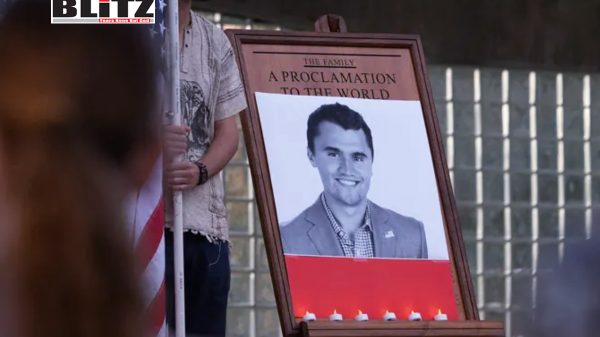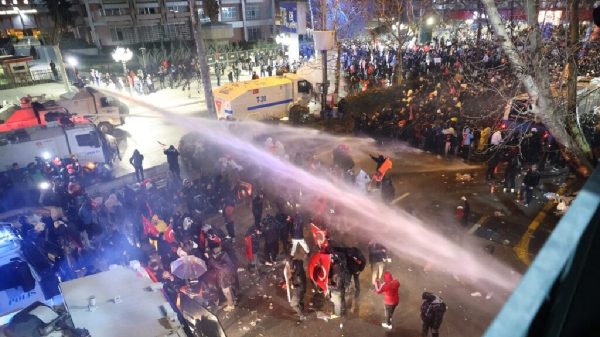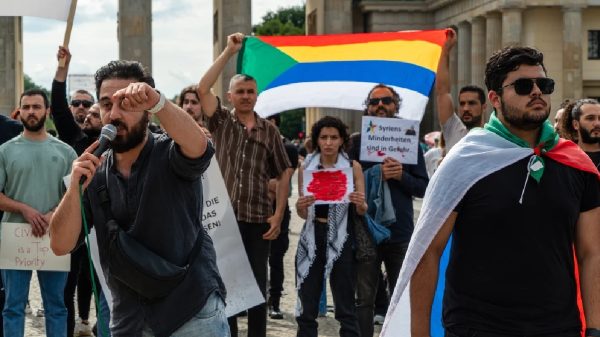Philippine anticorruption protests turn deadly as billions in flood-control funds face scrutiny
- Update Time : Wednesday, September 24, 2025

A massive wave of anticorruption protests swept across Manila on September 22, exposing deep public anger over billions of dollars allegedly siphoned off from government flood-control projects. What began as a largely peaceful rally of tens of thousands quickly turned violent, leaving one dead, hundreds arrested, and hundreds more injured, underscoring the fragility of Philippine democracy amid intensifying scandals surrounding President Ferdinand “Bongbong” Marcos Jr.’s administration.
The demonstrations followed revelations that nearly 10,000 government-funded flood-control projects, valued at more than $9.5 billion, are under investigation for corruption. These projects, carried out between July 2022 and May 2025, were intended to shield the country from increasingly devastating floods linked to climate change. Instead, watchdogs say many were “ghost” projects-funded on paper but never built-allowing politicians and contractors to pocket taxpayer money.
The scandal has become a rallying point for activists, environmental groups, and ordinary citizens who say they have long borne the costs of climate-driven disasters while government officials enrich themselves. Protest banners in Manila read, “Stop Stealing Our Future,” and “Floods Kill, Corruption Steals.”
What could have been a defining moment of civic mobilization quickly descended into chaos. According to the Philippine National Police (PNP), protesters clashed with officers after tensions flared on Sunday evening. Authorities accused demonstrators of pelting police with stones and setting fire to motorcycles, while some allegedly vandalized and looted a nearby business.
The Department of Health reported that 48 people were hospitalized, including two police officers, while one unidentified man died from a stab wound sustained during the melee. Police, however, downplayed the fatality, reporting instead that 131 of their officers had been injured, some seriously, but all now in stable condition.
By the end of the night, 224 people had been arrested, including 48 minors. Manila Police District spokesperson Philipp Ines described masked demonstrators as “hip hop gangsters” and vowed they would face charges ranging from illegal assembly to arson. National Capital Region Police Director Anthony Aberin confirmed that even minors would be charged with direct assault and physical injuries, signaling the state’s hardline stance.
The protests come at a politically perilous time for President Marcos. Already under pressure for acknowledging “rampant racketeering and fraud” within flood-control projects earlier this year, he now faces questions about his own potential role in the scandal.
A Philippine Center for Investigative Journalism (PCIJ) report revealed that Marcos himself received campaign contributions in 2022 from contractors later awarded flood-control deals. While not proof of direct corruption, the revelations raise troubling questions about conflicts of interest and whether the country’s highest office benefited from the same system under scrutiny.
The presidential palace attempted to defuse the crisis on Monday, declaring that Marcos is “willing to be investigated.” Critics, however, see the move as little more than damage control. “This is not just about one man’s willingness,” said political analyst Ramon Casiple. “It is about dismantling a system of corruption that has survived presidents for decades.”
Perhaps the most damning criticism comes from environmental watchdogs. Greenpeace Philippines estimated that as much as 1.089 trillion pesos ($19.12 billion) of government climate-tagged spending has been lost to corruption since 2023, including 560 billion pesos ($9.8 billion) in 2025 alone.
“Corruption and greed are undermining the ability of millions of Filipinos to survive in the face of climate change,” Greenpeace said in a statement. “Massive corruption on flood control projects at a time of climate change means Filipinos suffer a double burden-corruption and corporate impunity.”
The timing could not be worse. The Philippines, one of the world’s most disaster-prone countries, faces increasingly severe typhoons, floods, and sea-level rise. Communities that should have benefited from robust flood defenses instead remain exposed, fueling not just anger but despair.
The violent protests highlight a growing rift between a frustrated public and an establishment widely viewed as corrupt and unaccountable. For many, the scandal revives memories of the Marcos dictatorship, when billions were stolen from public coffers while ordinary citizens languished in poverty.
Opposition leaders have already called for broader investigations into the president’s family and allies. Civil society groups are mobilizing for more protests, insisting that the arrests of hundreds-including minors-will only inflame public outrage rather than quell it.
International observers are also taking note. With the Philippines long touted as a strategic US ally and democratic bulwark in Southeast Asia, the images of burning motorcycles, bloodied protesters, and militarized police forces clash with the government’s narrative of democratic progress.
What happens next could shape the trajectory of the Marcos presidency. If the administration is seen as complicitor incapable of addressing systemic corruption-the protests may mark the start of a broader movement challenging its legitimacy. Already, comparisons are being drawn to the 1986 People Power Revolution, when public outrage forced Marcos Sr. from power.
For now, the streets of Manila are quieter, but the underlying anger remains. The billions allegedly stolen from flood-control projects represent not just theft of money, but of lives, safety, and future resilience against climate change. The dead protester, the hundreds arrested, and the countless communities left vulnerable to floods embody a grim truth: corruption in the Philippines is not merely a financial crime, but a humanitarian one.
Unless the government demonstrates genuine accountability and systemic reform, the protests of September 22 may be remembered not as an isolated outburst, but as the spark of a larger reckoning.










